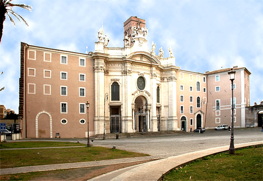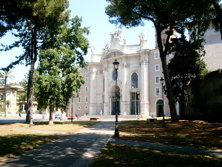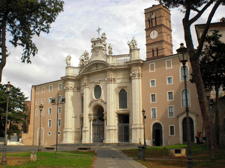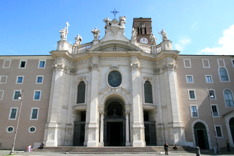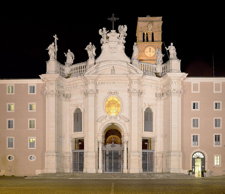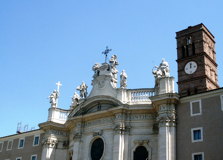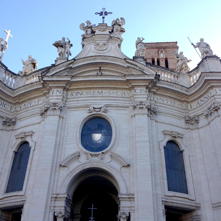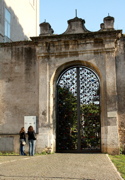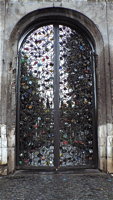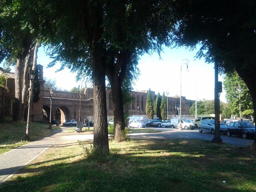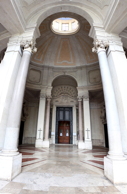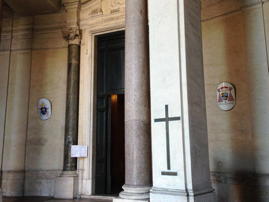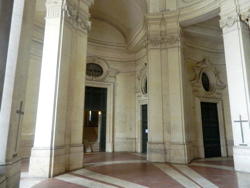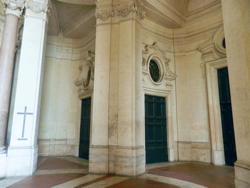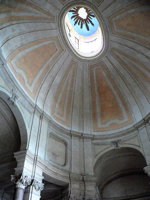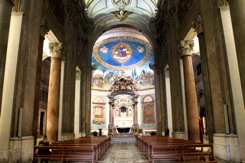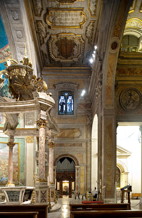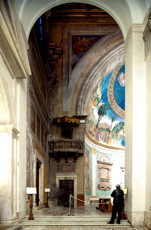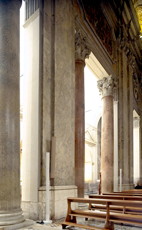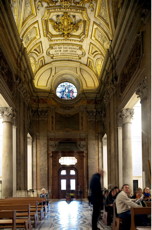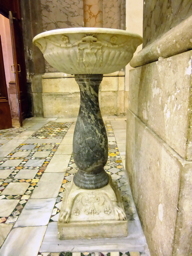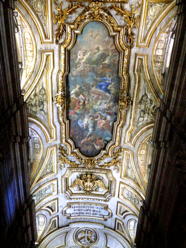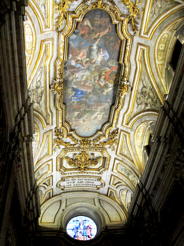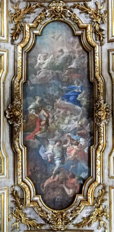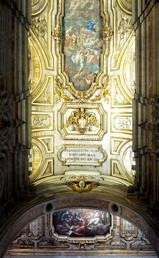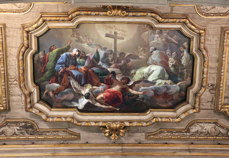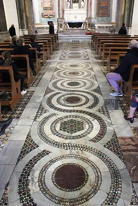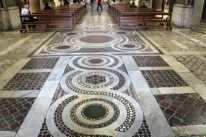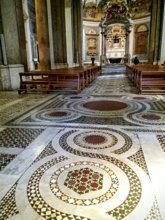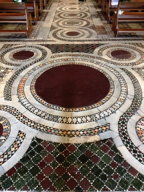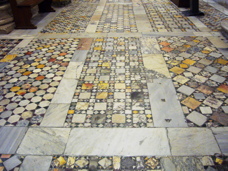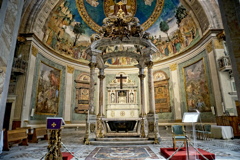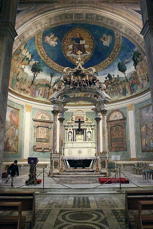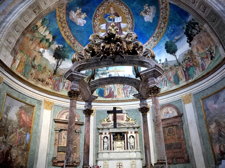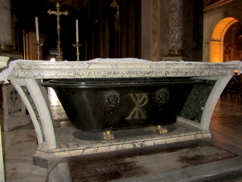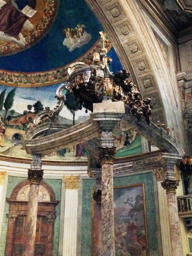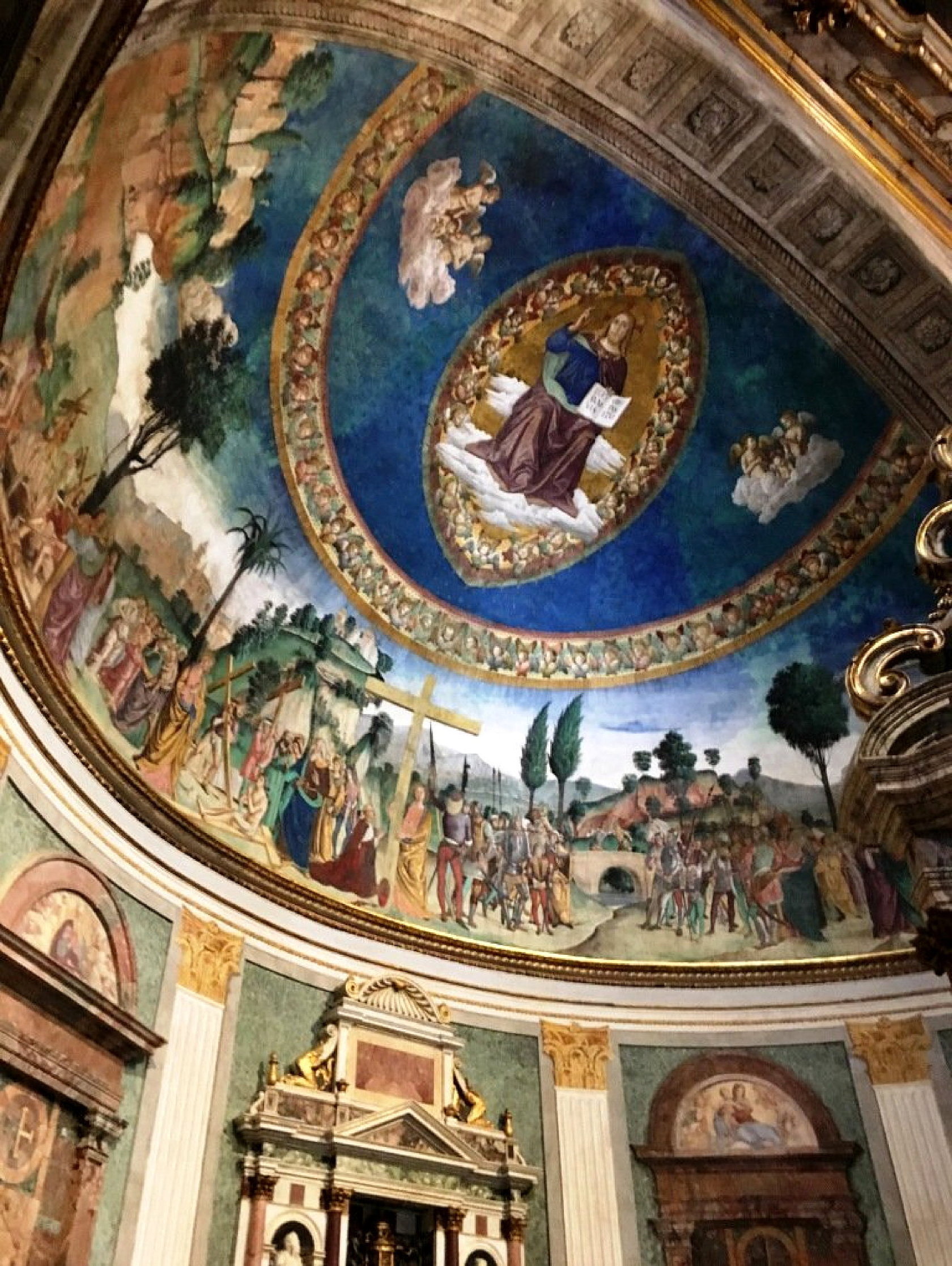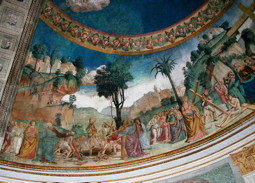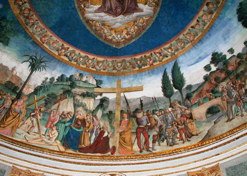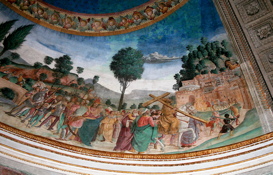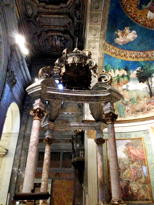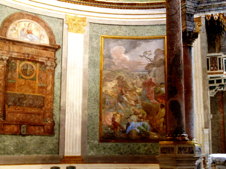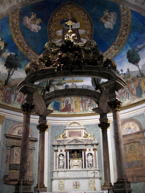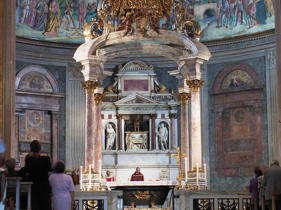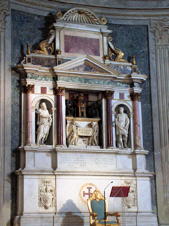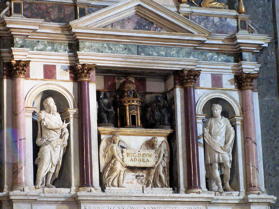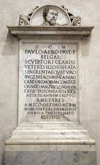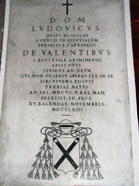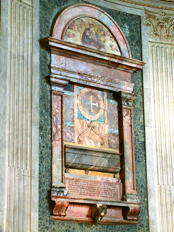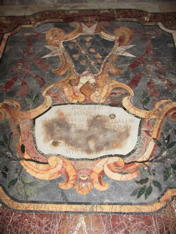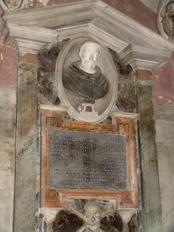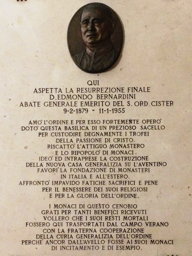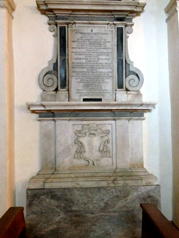Santa Croce in Gerusalemme is a church dedicated to the True Cross, built to house the Passion Relics brought to Rome by
St Helena.
(For reference, a plan of the church is available
here.
)
The church was consecrated about 325, in an older building that was rebuilt to house the relics. The floor was packed with soil from the Holy Land. It was at first known as the Basilica of Helena or Basilica Sessoriana (after the imperial palace that the site belonged to), but the official name was Hierusalem. The present name was given to it in the Middle Ages.
It was restored by
Pope Gregory II (715-731) and
Pope Hadrian I (771-795).
In 1049, the church was given to the Benedictines of Monte Cassino. They moved to San Sebastiano fuori le Mura in 1062, and the Canons Regular of San Frediano of Lucca were installed by
Pope Alexander II.
The Canons of the church had it rebuilt in the Romanesque style during the pontificate of
Lucius II (1144-1145).
While the papacy was based in
Avignon, in the 14th century, the church was abandoned. In 1370, a few years before the papacy returned to Rome,
Pope Urban V handed it over to the
Carthusians. They restored the church, especially during the periods when Pedro Gonzales de Mendoza and Bernardino L-pez de Carvajal were titulars of the church, respectively in 1484-1493 and 1495-1523.
In 1561, the Carthusians were transferred to Santa Maria degli Angeli, and Lombard
Cistercians from the congregation of San Bernardo were installed. They still serve the church, but the monastery once connected to the church has been converted into barracks.
Pope Benedict XIV had it rebuilt in the Baroque style between 1741 and 1744. The architects were Domenico Gregorini and Pietro Passalacqua. The roads that
Pope Sixtus V had planned in the early 16th century, linking Santa Maria Maggiore, San Giovanni in Laterano and this church, were finally completed at this time.
